Claudius Krause
BitHEP -- The Limits of Low-Precision ML in HEP
Apr 04, 2025Abstract:The increasing complexity of modern neural network architectures demands fast and memory-efficient implementations to mitigate computational bottlenecks. In this work, we evaluate the recently proposed BitNet architecture in HEP applications, assessing its performance in classification, regression, and generative modeling tasks. Specifically, we investigate its suitability for quark-gluon discrimination, SMEFT parameter estimation, and detector simulation, comparing its efficiency and accuracy to state-of-the-art methods. Our results show that while BitNet consistently performs competitively in classification tasks, its performance in regression and generation varies with the size and type of the network, highlighting key limitations and potential areas for improvement.
CaloChallenge 2022: A Community Challenge for Fast Calorimeter Simulation
Oct 28, 2024
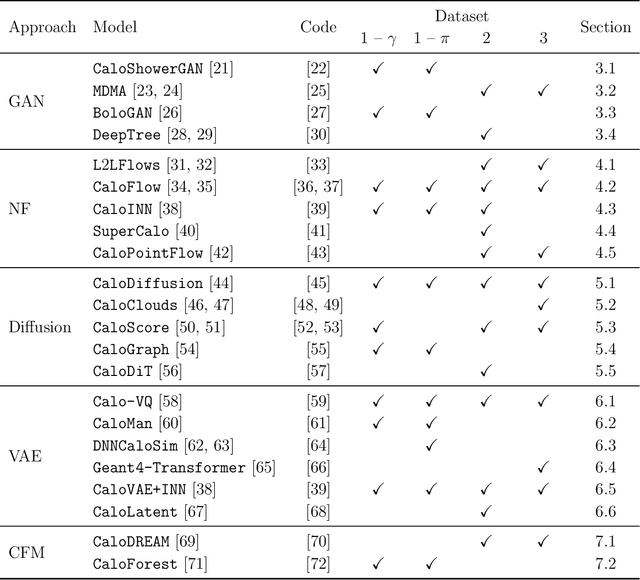
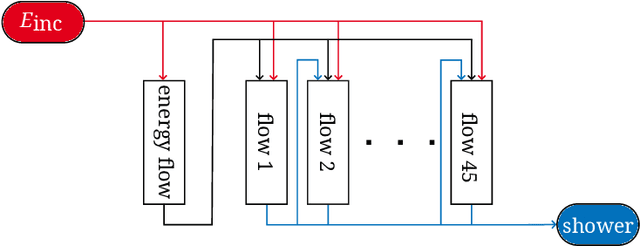
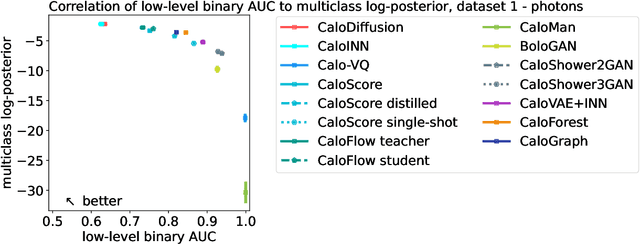
Abstract:We present the results of the "Fast Calorimeter Simulation Challenge 2022" - the CaloChallenge. We study state-of-the-art generative models on four calorimeter shower datasets of increasing dimensionality, ranging from a few hundred voxels to a few tens of thousand voxels. The 31 individual submissions span a wide range of current popular generative architectures, including Variational AutoEncoders (VAEs), Generative Adversarial Networks (GANs), Normalizing Flows, Diffusion models, and models based on Conditional Flow Matching. We compare all submissions in terms of quality of generated calorimeter showers, as well as shower generation time and model size. To assess the quality we use a broad range of different metrics including differences in 1-dimensional histograms of observables, KPD/FPD scores, AUCs of binary classifiers, and the log-posterior of a multiclass classifier. The results of the CaloChallenge provide the most complete and comprehensive survey of cutting-edge approaches to calorimeter fast simulation to date. In addition, our work provides a uniquely detailed perspective on the important problem of how to evaluate generative models. As such, the results presented here should be applicable for other domains that use generative AI and require fast and faithful generation of samples in a large phase space.
Convolutional L2LFlows: Generating Accurate Showers in Highly Granular Calorimeters Using Convolutional Normalizing Flows
Jun 03, 2024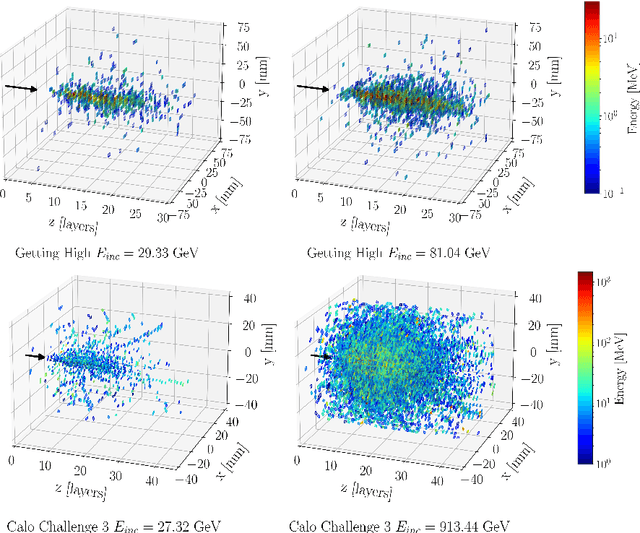

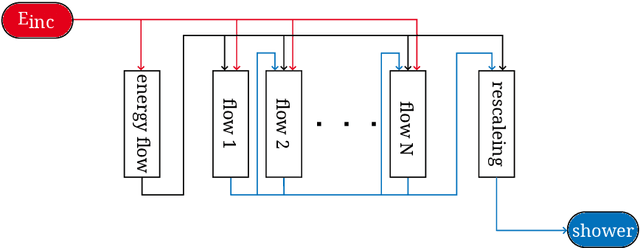
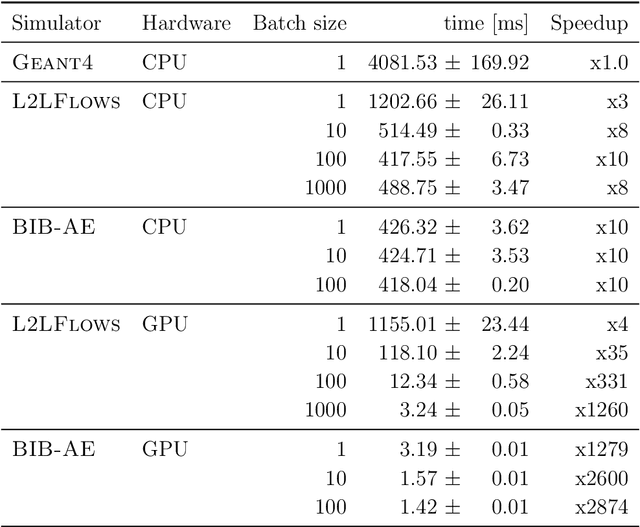
Abstract:In the quest to build generative surrogate models as computationally efficient alternatives to rule-based simulations, the quality of the generated samples remains a crucial frontier. So far, normalizing flows have been among the models with the best fidelity. However, as the latent space in such models is required to have the same dimensionality as the data space, scaling up normalizing flows to high dimensional datasets is not straightforward. The prior L2LFlows approach successfully used a series of separate normalizing flows and sequence of conditioning steps to circumvent this problem. In this work, we extend L2LFlows to simulate showers with a 9-times larger profile in the lateral direction. To achieve this, we introduce convolutional layers and U-Net-type connections, move from masked autoregressive flows to coupling layers, and demonstrate the successful modelling of showers in the ILD Electromagnetic Calorimeter as well as Dataset 3 from the public CaloChallenge dataset.
Unifying Simulation and Inference with Normalizing Flows
Apr 29, 2024



Abstract:There have been many applications of deep neural networks to detector calibrations and a growing number of studies that propose deep generative models as automated fast detector simulators. We show that these two tasks can be unified by using maximum likelihood estimation (MLE) from conditional generative models for energy regression. Unlike direct regression techniques, the MLE approach is prior-independent and non-Gaussian resolutions can be determined from the shape of the likelihood near the maximum. Using an ATLAS-like calorimeter simulation, we demonstrate this concept in the context of calorimeter energy calibration.
Deep Generative Models for Detector Signature Simulation: An Analytical Taxonomy
Dec 15, 2023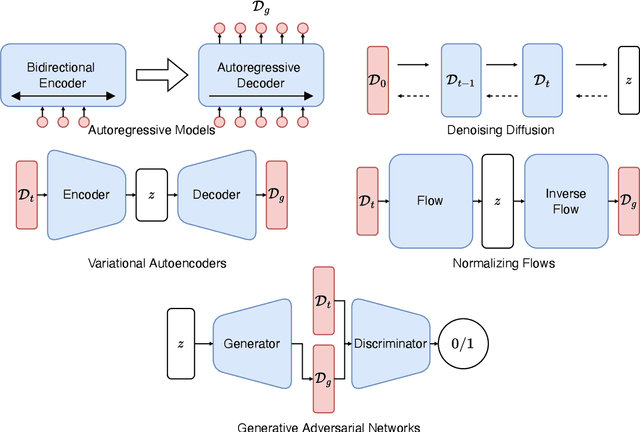


Abstract:In modern collider experiments, the quest to explore fundamental interactions between elementary particles has reached unparalleled levels of precision. Signatures from particle physics detectors are low-level objects encoding the physics of collisions. The complete simulation of them in a detector is a memory and storage-intensive task. To address this computational bottleneck in particle physics, "Fast Simulation" has been introduced and refined over the years. The field has seen a surge in interest in surrogate modeling the detector simulation, fueled by the advancements in deep generative models. These models aim to generate responses that are statistically identical to the observed data. In this paper, we conduct a comprehensive and exhaustive taxonomic review of the existing literature on the simulation of detector signatures from both methodological and application-wise perspectives. Initially, we formulate the problem of detector signature simulation and discuss its different variations that can be unified. Next, we classify the state-of-the-art methods into four distinct categories based on their underlying model architectures, summarizing their respective generation strategies. We then identify and discuss three key application areas. Finally, we shed light on the challenges and opportunities that lie ahead in detector signature simulation, setting the stage for future research and development.
Inductive CaloFlow
May 19, 2023



Abstract:Simulating particle detector response is the single most expensive step in the Large Hadron Collider computational pipeline. Recently it was shown that normalizing flows can accelerate this process while achieving unprecedented levels of accuracy, but scaling this approach up to higher resolutions relevant for future detector upgrades leads to prohibitive memory constraints. To overcome this problem, we introduce Inductive CaloFlow (iCaloFlow), a framework for fast detector simulation based on an inductive series of normalizing flows trained on the pattern of energy depositions in pairs of consecutive calorimeter layers. We further use a teacher-student distillation to increase sampling speed without loss of expressivity. As we demonstrate with Datasets 2 and 3 of the CaloChallenge2022, iCaloFlow can realize the potential of normalizing flows in performing fast, high-fidelity simulation on detector geometries that are ~ 10 - 100 times higher granularity than previously considered.
CaloFlow for CaloChallenge Dataset 1
Oct 25, 2022Abstract:CaloFlow is a new and promising approach to fast calorimeter simulation based on normalizing flows. Applying CaloFlow to the photon and charged pion Geant4 showers of Dataset 1 of the Fast Calorimeter Simulation Challenge 2022, we show how it can produce high-fidelity samples with a sampling time that is several orders of magnitude faster than Geant4. We demonstrate the fidelity of the samples using calorimeter shower images, histograms of high level features, and aggregate metrics such as a classifier trained to distinguish CaloFlow from Geant4 samples.
New directions for surrogate models and differentiable programming for High Energy Physics detector simulation
Mar 15, 2022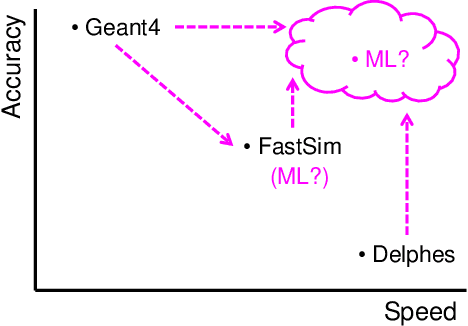
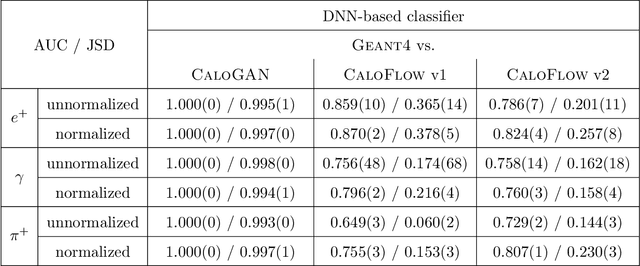
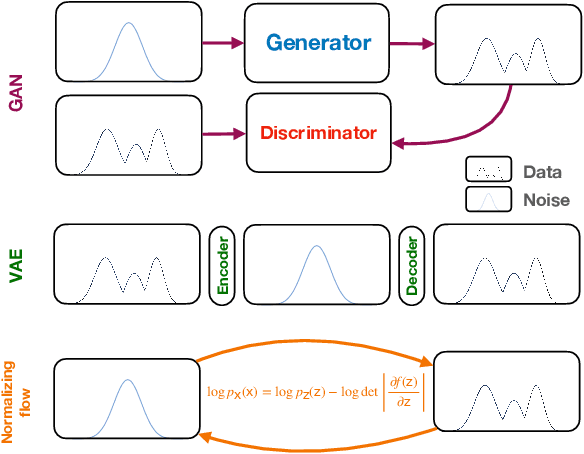
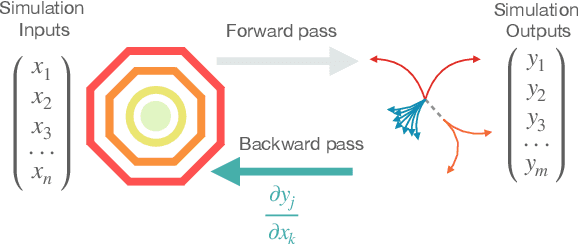
Abstract:The computational cost for high energy physics detector simulation in future experimental facilities is going to exceed the current available resources. To overcome this challenge, new ideas on surrogate models using machine learning methods are being explored to replace computationally expensive components. Additionally, differentiable programming has been proposed as a complementary approach, providing controllable and scalable simulation routines. In this document, new and ongoing efforts for surrogate models and differential programming applied to detector simulation are discussed in the context of the 2021 Particle Physics Community Planning Exercise (`Snowmass').
CaloFlow II: Even Faster and Still Accurate Generation of Calorimeter Showers with Normalizing Flows
Oct 21, 2021



Abstract:Recently, we introduced CaloFlow, a high-fidelity generative model for GEANT4 calorimeter shower emulation based on normalizing flows. Here, we present CaloFlow v2, an improvement on our original framework that speeds up shower generation by a further factor of 500 relative to the original. The improvement is based on a technique called Probability Density Distillation, originally developed for speech synthesis in the ML literature, and which we develop further by introducing a set of powerful new loss terms. We demonstrate that CaloFlow v2 preserves the same high fidelity of the original using qualitative (average images, histograms of high level features) and quantitative (classifier metric between GEANT4 and generated samples) measures. The result is a generative model for calorimeter showers that matches the state-of-the-art in speed (a factor of $10^4$ faster than GEANT4) and greatly surpasses the previous state-of-the-art in fidelity.
CaloFlow: Fast and Accurate Generation of Calorimeter Showers with Normalizing Flows
Jun 09, 2021



Abstract:We introduce CaloFlow, a fast detector simulation framework based on normalizing flows. For the first time, we demonstrate that normalizing flows can reproduce many-channel calorimeter showers with extremely high fidelity, providing a fresh alternative to computationally expensive GEANT4 simulations, as well as other state-of-the-art fast simulation frameworks based on GANs and VAEs. Besides the usual histograms of physical features and images of calorimeter showers, we introduce a new metric for judging the quality of generative modeling: the performance of a classifier trained to differentiate real from generated images. We show that GAN-generated images can be identified by the classifier with 100% accuracy, while images generated from CaloFlow are able to fool the classifier much of the time. More broadly, normalizing flows offer several advantages compared to other state-of-the-art approaches (GANs and VAEs), including: tractable likelihoods; stable and convergent training; and principled model selection. Normalizing flows also provide a bijective mapping between data and the latent space, which could have other applications beyond simulation, for example, to detector unfolding.
 Add to Chrome
Add to Chrome Add to Firefox
Add to Firefox Add to Edge
Add to Edge